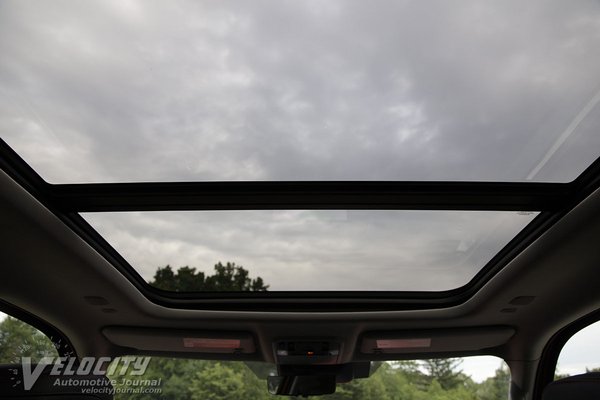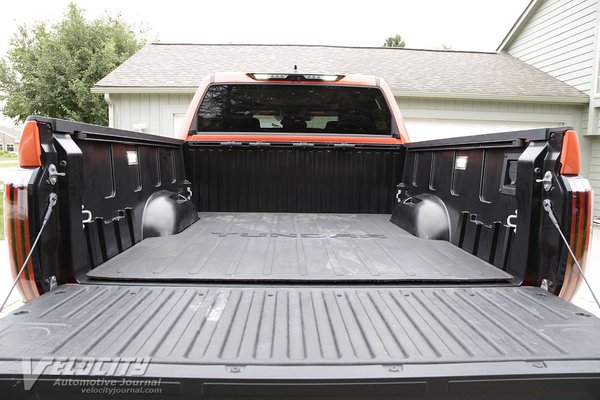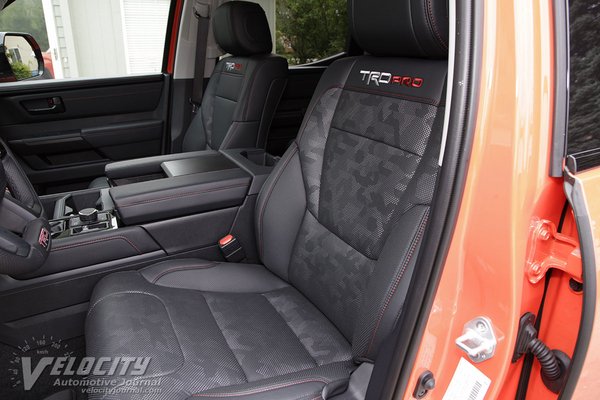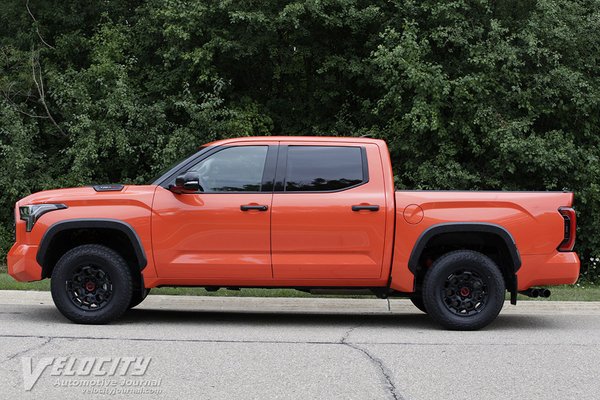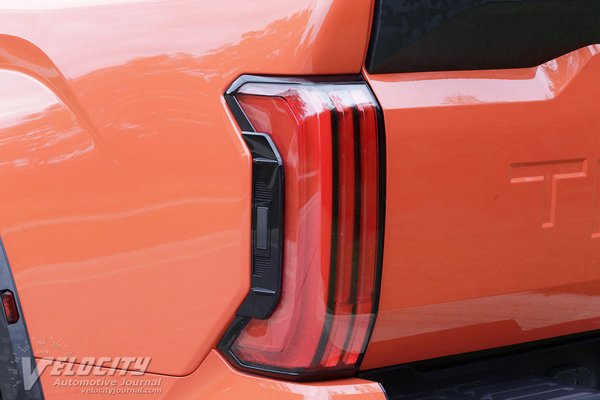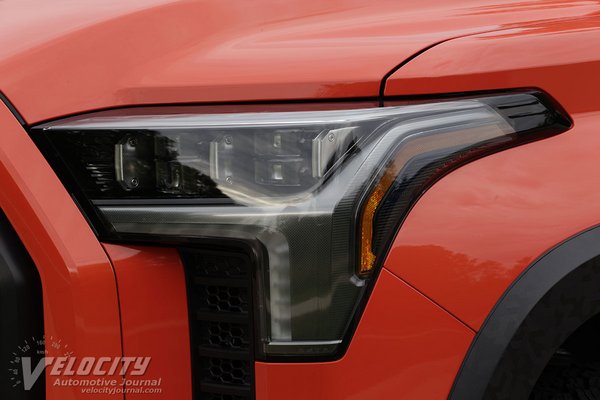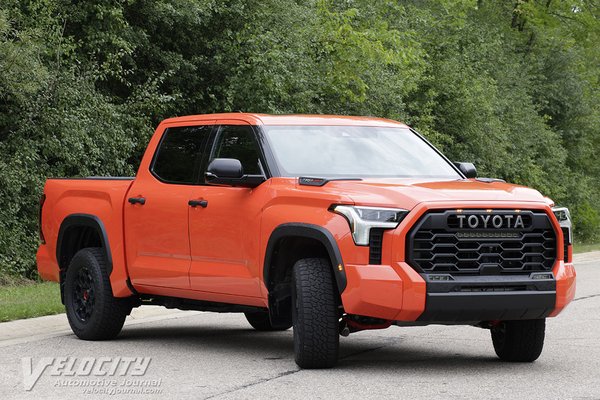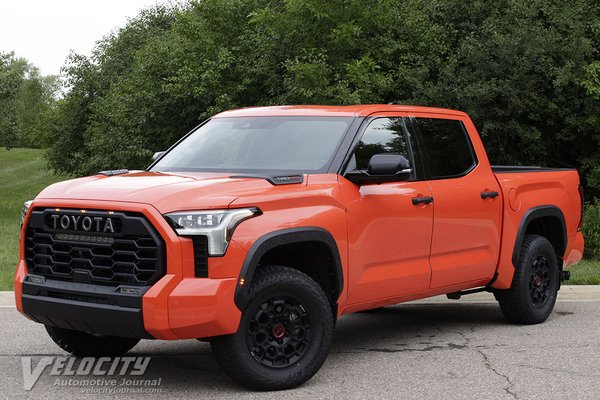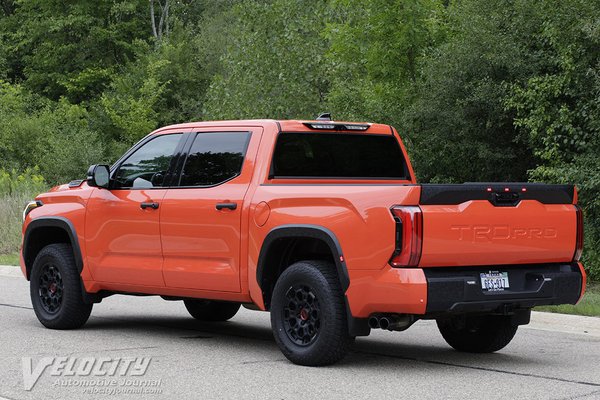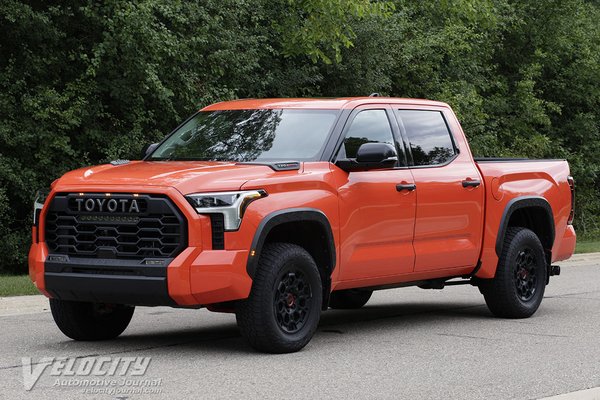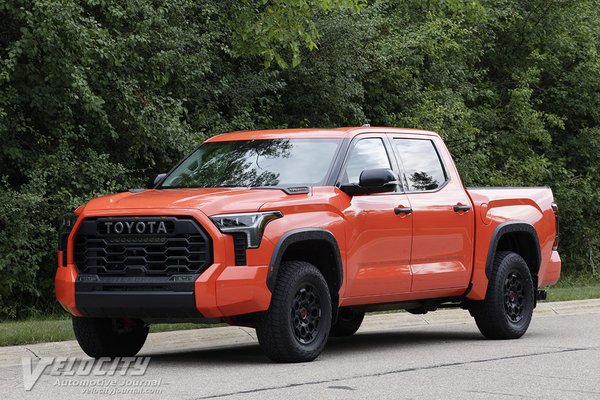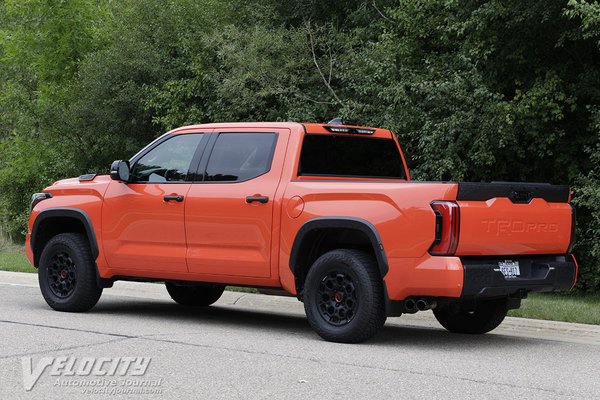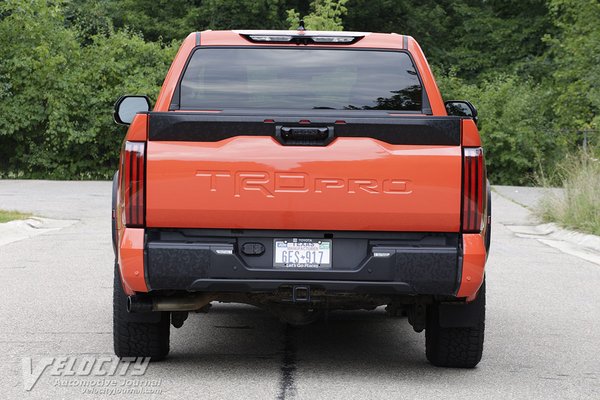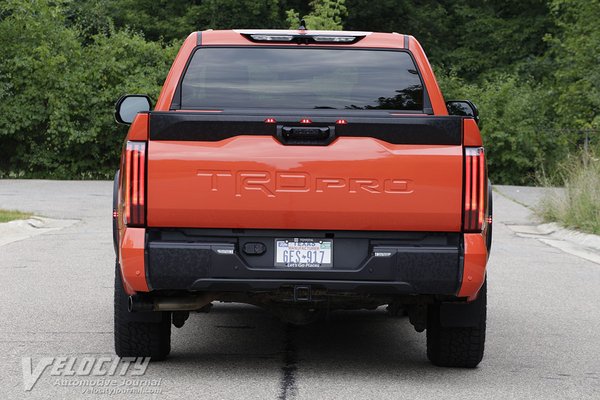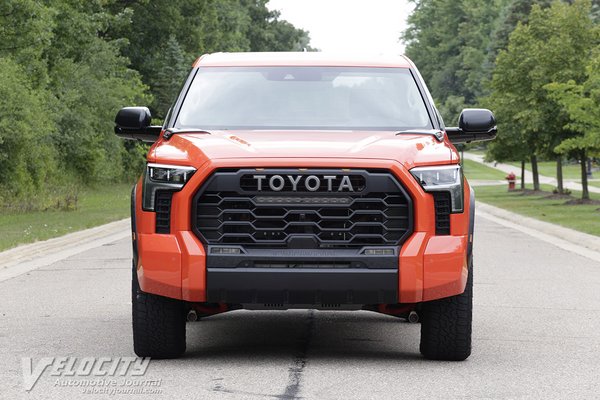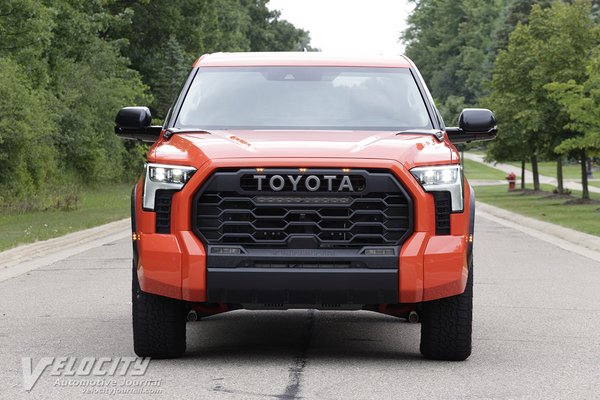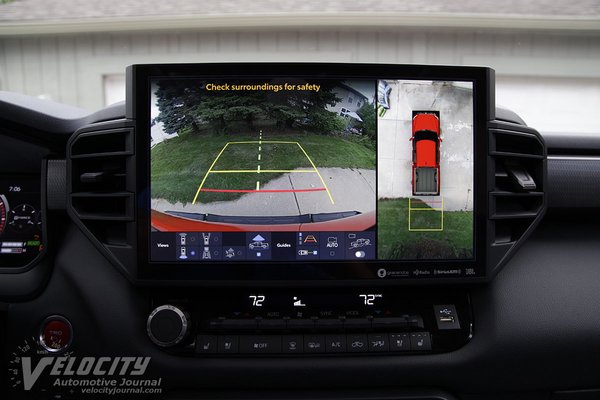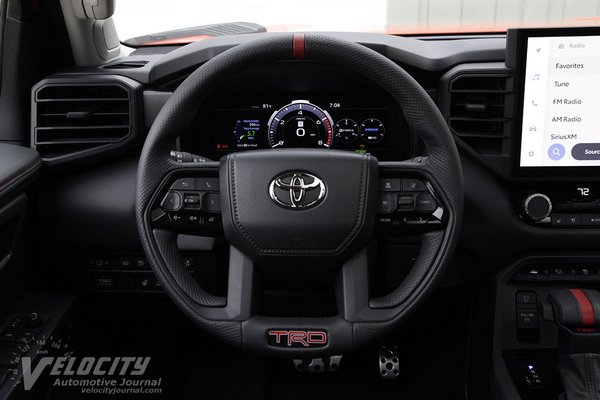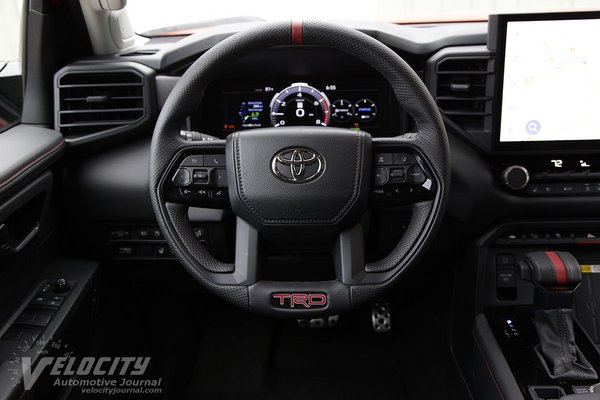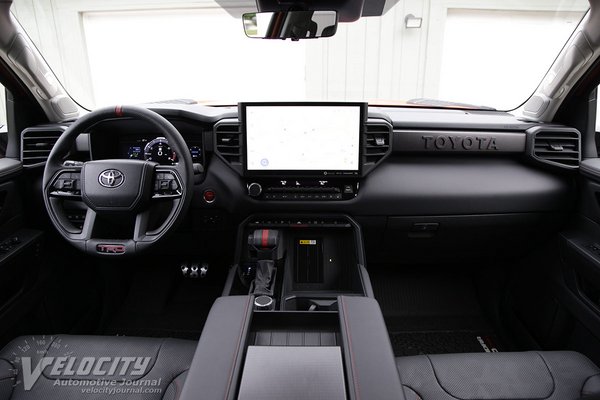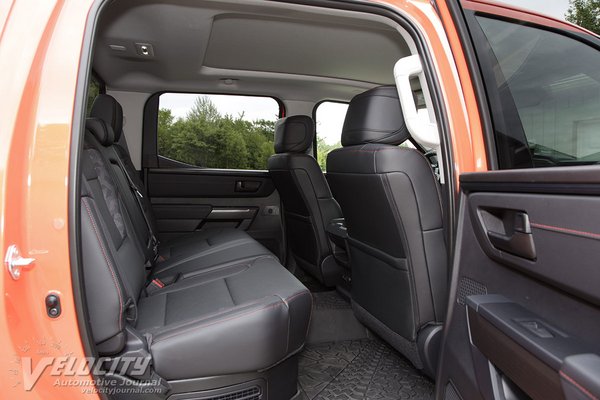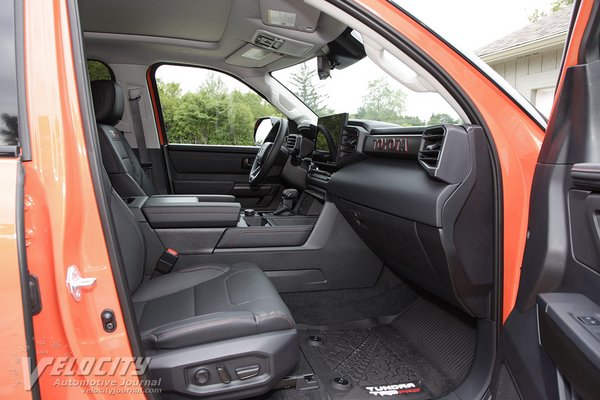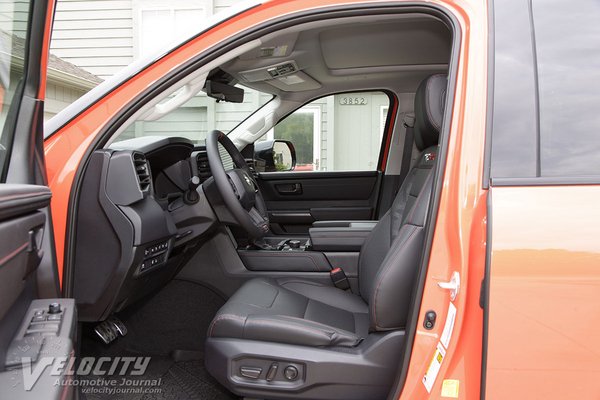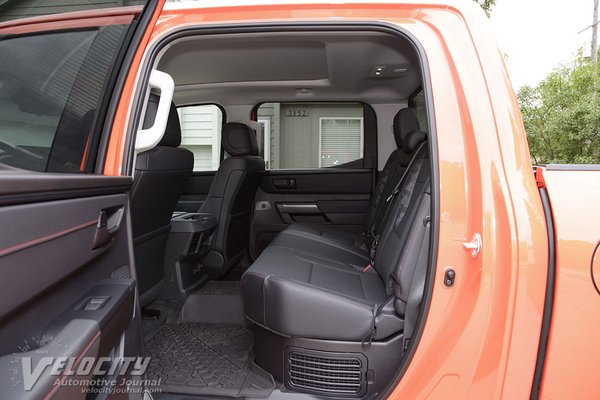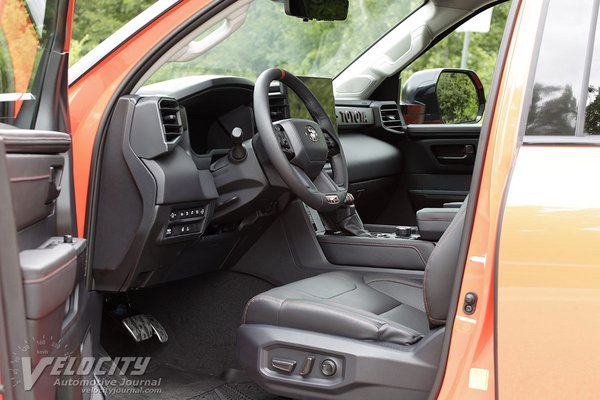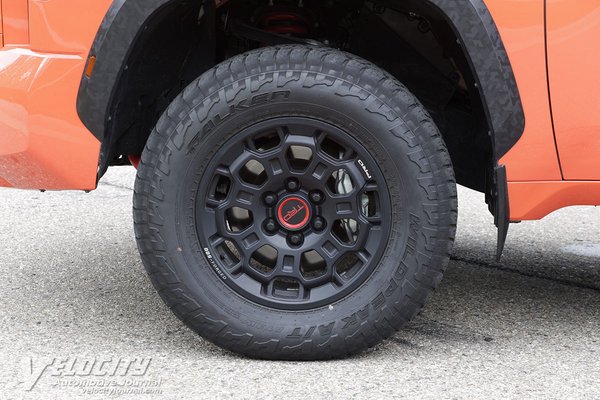A Tundra for the trails.
11/06/2022
Shahed Hussain
2022 Toyota Tundra TRD Pro
Synopsis
Review
Among full-size pickups, the Tundra has long been behind the sales leaders from Ford, GM and Stellantis. Although Toyota has not challenged the market share of its American rivals, the new Tundra appeals to truck customers looking for something different from the F-Series, Silverado/Sierra and Ram pickups.
Toyota sells the Tundra in seven trim levels starting with the base SR ($36,965) and up to the Capstone ($75,245). In between are the SR5, Limited, Platinum, 1794 Edition, and TRD Pro. The SR and SR5 are affordable work trucks, while the other Tundras (except the off-road TRD Pro) have more premium equipment and options. A twin-turbo V-6 powers all Tundras in both 2WD and 4WD drivetrains; the Limited and higher models can be ordered with a hybrid powertrain (i-Force Max) that delivers higher horsepower, torque and marginally superior fuel efficiency. Depending on the model, two cabs (Double Cab and CrewMax) and three bed lengths are available: 5.5 ft., 6.5 ft., and 8.1 ft (SR & SR5 only). We tested a 4WD 2022 TRD Pro CrewMax and 5.5 ft. bed, painted in Solar Octane ($425). An equivalent 2023 TRD Pro would cost $70,740 including the $1,795 delivery fee. Significant standard equipment includes power sliding panoramic roof, power sliding rear window, 14-in. infotainment display, 12-speaker JBL audio system, Apple CarPlay(R) and Android Auto(TM), power front heated and ventilated seats, panoramic view monitor, front skid plate, engine, fuel tank and transfer case undercovers, electronic locking rear differential, multi-terrain modes, and towing hitch receiver.
A new aluminum twin-turbo 3.5L V-6 is available as gas-only (i-Force) or hybrid (i-Force Max), mated to a 10-speed automatic. The i-Force V-6 is offered in two power/torque ratings: 348-hp/405 lb.-ft. (SR), 389-hp/479 lb.-ft. (all other models). For the i-Force Max, Toyota cranks the output up to 437-hp @ 5,200 RPM and 583 lb.-ft. @ 2,400 RPM. The aluminum 24-valve V-6 has dual overhead-cams, variable valve-timing (VVT-i), and both direct and port fuel injection. The i-Force Max hybrid powertrain adds a 48-hp/184 lb.-ft. electric motor/generator and a 288V, 1.87 kWh Ni-MH battery pack. A part-time electronically-controlled 2-speed transfer case sends power to all four wheels in 4WD models. EPA fuel consumption estimates are 18/20 MPG (city/hwy.) for the TRD Pro. We averaged 16 MPG in mixed urban and highway driving.
Toyota fully boxed the Tundra's new steel frame to improve strength and rigidity. Both the hood and front door panels are aluminum. The pickup bed is aluminum-reinforced composite, minimizing corrosion and dents. Curb weight for a 4WD CrewMax and 5.5. ft bed ranges from 6,010-6,095 lbs. GVWR varies from 7,230-7,780 lbs. for CrewMax models. Payload and towing capacity for the TRD Pro is 1,600 lbs. and 11,175 lbs., respectively.
The Tundra's front suspension consists of double wishbones, coil springs, dampers, and stabilizer bar. At the rear, Toyota abandoned leaf springs and located the solid axle using a multi-links, coil springs and dampers. An adaptive variable suspension (AVS) and load-leveling rear air suspension are optional on some Tundras. The TRD Pro has an off-road suspension lifted 1.1 in., Fox coilovers with remote reservoirs, and a TRD-specific front stabilizer bar. Also unique to the TRD Pro is a faster geared motor-assisted rack-and-pinion steering: 3.2 (TRD Pro) vs. 3.4 (other Tundras) turns lock-to-lock. Vented disc brakes are at all four wheels: 13.9-in. front rotors (dual piston calipers) and 13.6-in. rear rotors (single piston calipers). Falken Wildpeak P285/65R18 all-terrain tires are mounted on 18-in. BBS forged alloy wheels.
A dark gray interior with red stitching, red-accented TRD steering wheel and shift lever, along with aluminum pedals distinguishes the TRD Pro from other Tundras. The perforated simulated leather (Softex(R)) seats embroidered with the TRD logo are comfortable, and the bolsters offer decent lateral support. Both driver and passenger get 8-way power seat adjustments, including 2-way lumbar support. Front and rear headroom is ample for occupants over 6 ft. tall. The flat rear bench seat can comfortably accommodate three occupants with generous legroom.
The Tundra's 12.3-in. electronic meter cluster displays an analog tachometer, digital speedometer and other essential secondary gauges. The 4-spoke heated leather-wrapped steering has integrated audio, cruise, and phone controls. Below the dash-mounted infotainment screen are dual-zone climate controls and a USB port. Next to the shifter is an open storage bin and wireless phone charging cradle. A pushbutton behind the shifter selects transfer case modes between 2H, 4H, and 4L. An adjacent rotary knob selects powertrain drive modes. Dual cupholders accommodate bottles and mugs for front passengers. A large center console compartment with dual USB ports (USB-A & C) provides additional storage. Rear passengers get dual USB ports and a 120V outlet to charge mobile devices and laptop computers. A 120V/400W outlet is located in the pickup bed.
Toyota's new turbo V-6 hybrid powertrain surpasses the previous V-8 in both power, torque and throttle response. Turbo lag is imperceptible, masked by the electric motor's instant torque and aided by the close-ratio 10-speed automatic. Above 80 MPH, acceleration tapers off rapidly due to the Tundra's brick-like aerodynamics. We mostly drove in the Normal or Sport powertrain modes, which delivered the best acceleration, but likely increased fuel consumption. In low-speed parking maneuvers, the Tundra can operate in full electric mode with the gas engine turned off, but only for a few minutes.
Despite its off-road focus, the TRD Pro required minimal compromises in suburban and highway driving. Increased chassis rigidity enhances both ride and handling. The coil spring rear suspension controls the rear axle effectively, minimizing shudder over potholes and patched roads. Running on gravel and dirt trails requires soft suspension tuning, contributing to the TRD Pro's compliant ride along with moderate body roll and understeer. Accounting for its 3-ton curb weight, Toyota dialed in significant power assist to lighten steering effort. Tracking and steering accuracy is acceptable considering the all-terrain tires, but above 70 MPH constant correction is necessary to maintain lane position. Wind and engine noise is commendably low at highway speeds, but the Falken tires rumble constantly. Braking performance is exemplary; the TRD Pro decelerated from highway speeds with confidence. Progressive brake actuation and a firm pedal gave us confidence that the brakes matched the powertrain. Our test vehicle had some significant body vibrations between 60-80 MPH. We aren't sure if it was unique to this vehicle, tires, or a general NVH issue.
The TRD Pro is aimed as an alternative the Ford Raptor (and undercuts the Ford's pricing), but truck customers tend to be brand loyal. We expect that this Tundra will attract fans who want an alternative with the Toyota badge. Even so, it's encouraging that the Tundra lineup is expanding to accommodate a wider range of customers.

